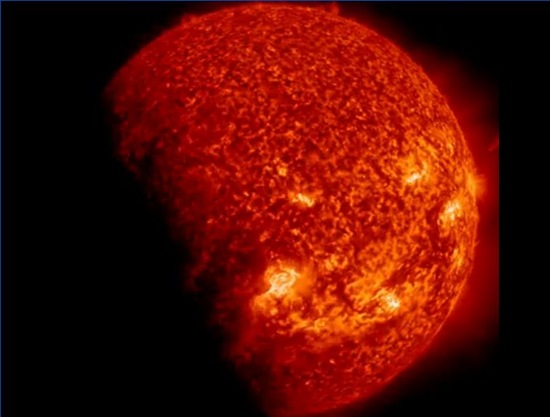
An incredible eclipse: NASA shows the view from its solar spacecraft as the Earth blocks its view
By Mark Prigg, Daily Mail, 9 November 2012.
By Mark Prigg, Daily Mail, 9 November 2012.
It is a unique view of an eclipse - but one that causes more problems for astronomers than any other.
Twice a year, for three weeks near the equinox, NASA's Solar Dynamics Observatory (SDO) spacecraft moves into its eclipse season - a brief spell when Earth blocks its view of the sun for a period of time each day.
For engineers, it is a huge problem, as the lack of light causes one of the key instruments aboard, which usually captures stunning images of the sun, to blur.
Scroll down for video
Scroll down for video
The Earth begins to obstruct the SDO's view of the Sun.
Engineers designed the orbit of the craft to avoid problems, but the images of an eclipse in September reveal the astonishing images collected, and the blur the eclipse causes.
A BLURRY PROBLEM
The Helioseismic and Magnetic Imager (HMI) on SDO observes the sun through a glass window.
The window can change shape in response to temperature changes, and does so dramatically and quickly when it doesn’t directly feel the sun’s heat.
|
The most recent eclipse season took place September 6-29.
As Earth entered and exited SDO’s field of vision, its advanced imaging instruments captured partial views of the sun at multiple wavelengths.
'Solar scientists do not get much use from these images, though atmospheric researchers may be able to gain some insights by observing the sun's light as it moves through Earth's atmosphere,' says NASA.
The Helioseismic and Magnetic Imager (HMI) on SDO observes the sun through a glass window.
The window can change shape in response to temperature changes, and does so dramatically and quickly when it doesn’t directly feel the sun’s heat.
The Helioseismic and Magnetic Imager (HMI) aboard the Solar Dynamics Observatory (SDO) maps the magnetic field on the sun's surface.
'You’ve got a piece of glass looking at the sun, and then suddenly it isn’t,' said Dean Pesnell, the project scientist for SDO at NASA’s Goddard Space Flight Centre in Greenbelt, Maryland [USA].
'The glass gets colder and flexes. It becomes like a lens.
'It’s as if we put a set of eye glasses in front of the instrument, causing the observations to blur.'
An eclipse causes a blurry image for about 45 minutes after Earth finishes its transit across the sun, as shown on
the left. The right half shows normal data.
the left. The right half shows normal data.
To counteract this effect, HMI was built with heaters to warm the window during an eclipse.
By adjusting the timing and temperature of the heater, the HMI team has learned the best procedures for improving resolution quickly.
Without adjusting the HMI front window heaters, it takes about two hours to return to optimal observing.
Over the two years since SDO launched in 2010, the team has brought the time it takes to get a clear image down from 60 minutes to around 45 to 50 minutes after an eclipse.
'We allocated an hour for these more blurry images,' says Pesnell. 'And we’ve learned to do a lot better than that.
'With 45 eclipses a year, the team gets a lot of practice.'
The sun as it normally appears to the SDO cameras.
The changes cause the delicate instruments aboard the SDO to defocus.
Video
Source: NASA
More...
Top image: Screen capture from video
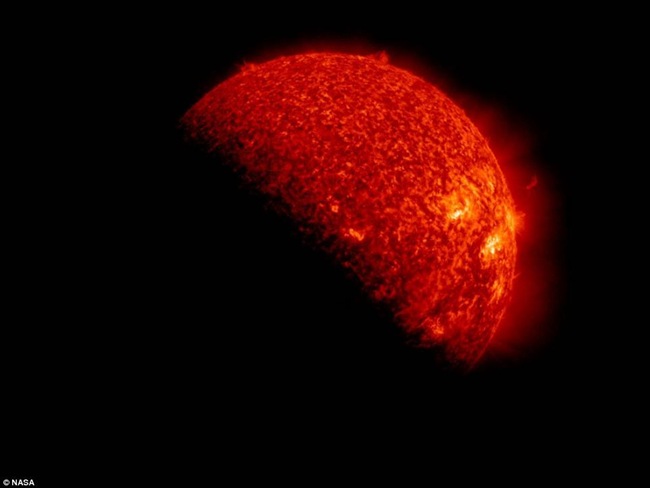
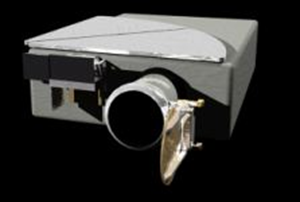
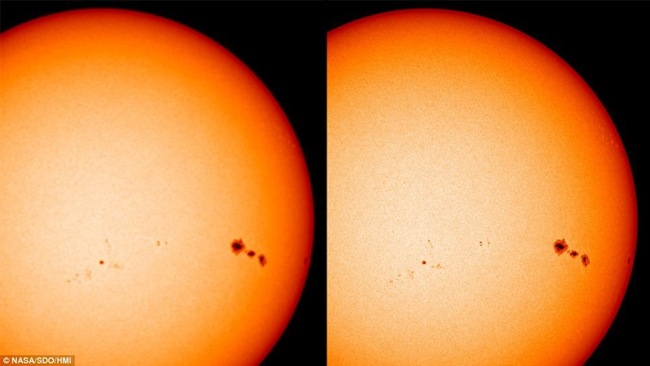

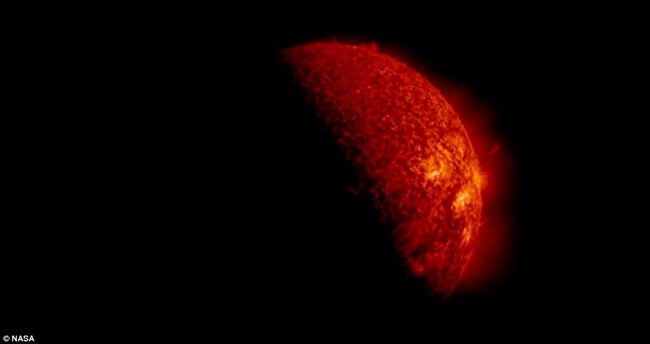
No comments:
Post a Comment
Please adhere to proper blog etiquette when posting your comments. This blog owner will exercise his absolution discretion in allowing or rejecting any comments that are deemed seditious, defamatory, libelous, racist, vulgar, insulting, and other remarks that exhibit similar characteristics. If you insist on using anonymous comments, please write your name or other IDs at the end of your message.